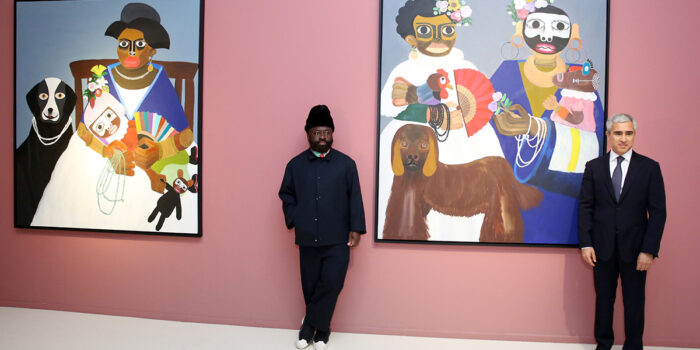Sally Howard investigates the clever ways in which architects and hoteliers’ are working to help us all sleep more easily
Sleep and travel are poor bedfellows. From cramped overnights on the red eye to jetlag-induced staring matches with hotel ceilings, frequent travellers all have their nocturnal war stories to tell. It’s all down, of course, to circadian rhythms, the in-built patterns of wakefulness and sleepiness we cycle through over the course of 24 hours that are regulated by our body’s exposure to light. Disrupt these with a long-haul flight, antisocial work hours, tech use or a mewling newborn and everything suffers, from our energy level and mood to our metabolism.
Until recently the best that science could offer our sleepless plight was pharmaceuticals: sleeping pills, drowsiness-inducing antihistamines and, in the US, synthetic melatonin. But who needs to battle grogginess and drug resistance when there’s a jetset life to lead? Or, at the very least, sightseeing to be done without feeling as if you’re wading through custard in wet socks.
Well weary one, your sleep heroes cometh. Following on from architecture’s eco and greening turns, sleep is the building-for-wellness frontier of the moment, with everyone from hoteliers to architects honing in on the body clock-healing properties of light.
First displayed at 2013’s London Design Week, The Photon Pod is a 30-metre sq prototype all-glass house designed to maximize inhabitants’ exposure to high-frequency white morning light, which boosts the production of the ‘wakefulness’ hormone cortisol. Built as an experimental collaboration between architecture start-up The Photon Project and Oxford University circadian neuroscientist Professor Russell Foster, the pod attracted so much public interest they’ve now been developed for sale. The 45-metre sq prefab ‘Photo Spaces’ come with a bedroom-bathroom and sitting-room kitchen and cost from £210,000. They’re designed, says architect Brent Richards, to be assembled on the top of existing built properties, or on-the-go as pop-up properties for rural ‘bodyclock breaks’.
Leading the hotel sector’s drive to make exposure to natural light a recuperative feature come Scandinavian pod and igloo properties. At remote Levin Iglut in Finland the night time view of the aurora borealis dancing against a coal-black sky is as much of an attraction as the joy of being woken by the rose-white glow of a Finish springtime dawn. Meanwhile Manshausen Seacabins, on the little-visited Norwegian island of the same name, makes the most of the unpolluted 67 degree Northern latitude light with 360 floor-to-ceiling windows.
Properties lacking such natural benefits have turned to tech as a sleep cycle curative. Launched at its properties in Zurich and Singapore, Swissôtel’s Vitality Rooms allow guests to sleep and wake to tailored light spectrum settings, adjustable along the white light spectrum from 2700 to 6500k ‘colour temperatures’. Also unveiled this year, Preidlhof Hotel and Spa’s Dream Well Suite features lighting to mimic sunrises and sunsets, or morning sunbeams slanting through treetops, accompanied by acoustics such as the avian dawn chorus. “The goal was to create a completely authentic space that was as close as possible to the acoustic environment of a deciduous forest,” says designer Daniel Lathan.
Meanwhile German architect Jurgen Mayer embraces the potential of tech to turn us into ‘sleep nomads’. First exhibited at the Istanbul Design Biennial, Mayer’s ‘Nap Room’ is filled with ‘pink’, or low-frequency noise, with similarly sleep-inducing pink and amber light emitted by ceiling-strung light-bulbs. Mayer says his project shows how we’ll evolve away from the eight-hour sleep bloc that’s been the norm since the Industrial Revolution to snatching zzzs on the go, as tech further divorces us from the dark-light cycle. Also celebrating the brave new world of snatched sleep, comes New York mattress start-up Casper. Their recently launched ‘Dreameries’, in their Village and Broadway stores, include curtains sleep pods where, for a $25 fee, harried New Yorkers can book 45 minutes’ kip in the dimly lit, womblike space. “We’re very much trying to destigmatize sleep and napping,” says Casper’s Eleanor Morgan. Quite some aim in the city that never sleeps.
Or you could always go low-tech. Nick Clayton is a proponent of the body clock restoring ‘dark sleeping’ subculture, which advocates a few nights under canvas in a remote spot as the cure to all circadian ills. “All you need is a tent and a rural location with no light pollution and I’ll have you sleeping like a baby,” he smiles. So whether it’s ultra-swish high technology, or a rustic getaway, you’ve no excuse now for having a bad night’s sleep.
Main image courtesy of Levin Iglut. Images courtesy of The Photon Project and Preidlof Hotel






